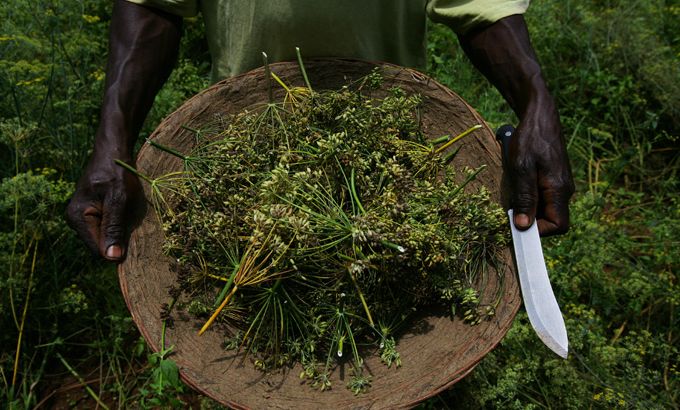
Seeds of Survival
Could the most innocuous species hold the key to the future of humanity?
Filmmaker: Tom Evans and Kevin Rushby
Paul Kirika is the son of the famous Kenyan botanist, the late Mzee Kajui, and is now himself considered one of the most knowledgeable field botanists in East Africa. His work has taken him from the coastal forests to the mountaintops, from the humid lake region to the dry and remote northern areas and the dwindling forests around Nairobi.
Keep reading
list of 4 itemsCould shipping containers be the answer to Ghana’s housing crisis?
Thousands protest against over-tourism in Spain’s Canary Islands
Holding Up the Sky: Saving the Indigenous Yanomami tribe in Brazil’s Amazon
Together with Tim Pearce, a botanist from the UK, he has been struggling to find rare plant species in the mountains of Kenya that could hold the key to human food security.
| Filmmaker’s view |
We are all familiar with the images of African wildlife: elephants against the sunset, lions on a kill, and the cheetah sprinting towards its prey. We are also familiar with the battles against poaching and the efforts to preserve this wildlife for future generations. But what we never pay attention to is the plants around those animals. And what few of us ever suspect is that our own survival may depend on some of those very plants.
It was this that fascinated me about the story behind Seeds of Survival. Could it be that the most innocuous, the most insignificant species might hold the key to the future of humanity? There was also the chance to travel and work with botanists. It promised a very different view of the African bush to the one we normally see. And so it was.
Botanists do not behave like other naturalists. A zoologist, for example, might stop the car, scan the trees and say: “Look. Lions!” Then you would sit quietly watching the animals. But botanists just leap out of the car and run into the bush without a glance.
One night we sat around the fire and heard a few stories about what can happen when you leap out of the car and rush into the bush – tales of seed-hunters caught in buffalo charges or sprinting back to the vehicle with an angry elephant in hot pursuit. There is never a dull moment in the search for rather small and unspectacular plants.
Actually the sheer lack of visual impact in the plants was a major worry for myself and cameraman/director Tom Evans. We just worried that a wild yam or rice might be a bit boring to look at, even if it did hold the key to new crop species and food security for millions of people around the globe. I remember Tom’s face when we first saw the dried specimens in the Herbarium at Nairobi’s National Museum. He was not happy.
But then our two botanists, Paul Kirika and Tim Pearce, moved into action and, believe me, they more than made up for the static nature of the plants. The species we were looking at were as rare as anything on the planet and possibly already extinct. There was no seed. We had a challenge.
 | Bringing global issues into focus through courageous and inspiring human stories. Watch more Witness. |